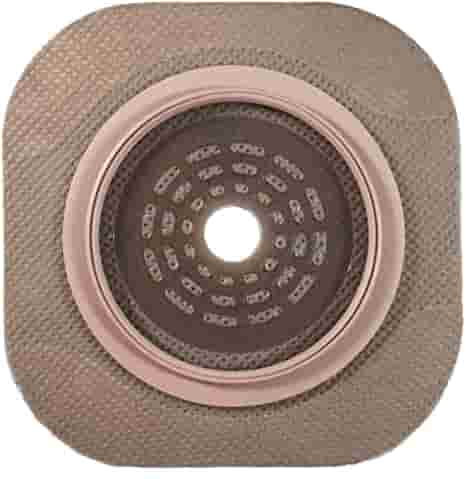
Many individuals are affected by Urinary Incontinence (UI) across the age spectrum, although the prevalence increases over sixty-five years old adults. We must understand that UI is not part of the normal aging process. Factors such as anatomic, physiologic, and disease conditions affect the occurrence of Urinary incontinence in over 25 million adults in the United States alone.
Selecting suitable incontinence products that fit individual needs is essential for patients' and caregivers' well-being and quality of life. Contention and concealing incontinence empower individuals, preserve their identity and dignity as a person with incontinent issues, and avoid the stigma attached to incontinence. While not able have the power to control incontinence symptoms, it has the potential to create insurmountable levels of stress and anxiety for the person with incontinence.
The main barriers to seeking support from healthcare professionals were a misunderstanding that these symptoms are a normal part of aging, a lack of awareness of available treatment options, and a feeling of embarrassment. It is essential to overcome these barriers and identify them early because these symptoms significantly affect patients’ physical and mental well-being.
Medical supply stores and pharmacies have a chance to receive queries regarding appropriate supplies to manage urinary incontinence; as a result, medical suppliers need to understand urinary incontinence and counsel and guide patients and caregivers in selecting absorbent products.
A person with urinary incontinence prone to leakage or accidents may also experience incontinence-associated dermatitis (IAD). The reason being the skin gets frequent exposure to urine.
The following are important reminders for patients and their caregivers with incontinence.
Utilize incontinence products that can potentially eliminate the embarrassment of unpleasant odors. 
Consult your provider to see if skin protectants like those recommended for diaper rash, such as zinc oxide, to protect the surrounding skin
Decrease skin irritation by frequently checking the skin around the pad every two hours.
Make sure to change the absorbent women’s undergarments every 2 to 4 hours whenever there is a continuous urine leak.
Always talk to your healthcare provider if symptoms worsen, skin irritation or signs of skin infection are observed.
Reduce foods, liquids, and other substances ingested that can potentially exacerbate the loss of bladder control. Getting help from The National Nurse Continence Specialists Helpline provides an array of continence-related resources and referrals. Professionals at the helpline are specialists who are trained to listen, engage, ask questions and offer incontinence-related solutions to the calling person.
In general, not all incontinence can be completely cured. Patients who are successfully treated may have to face living with incontinence for years to come. For instance, patients may experience incontinence while they are waiting for surgery. In this instance, pelvic floor exercises (Kegels) may provide some control over the bladder when the person with incontinence coughs, laughs, sneezes, or does activities. Kegels is an exercise to strengthen pelvic floor muscles by contracting as the pelvic floor lifts, followed by a relaxation phase after each contraction. The technique to carry out this type of exercise comprises finding the right pelvic muscles, maintaining focus, and Repeating the exercise three times a day. Keeping active with practice, the pelvic floor muscle can provide some control over bladder leaks. Pregnancy and childbirth are among the contributing factor that worsens incontinence. In addition to the incontinence products sold in the market, several devices target improving overall pelvic health to control urinary leaks. Some incontinence products make managing it more convenient and prevent complications that result worsening of the condition. For instance, absorbent pads and diaper underwear reduce skin irritation due to urinary leaks. When selecting pads and pull-up underwear, the amount of leaks that can occur is important. Sky medical supplies provide several single-use and reusable incontinence products.
Understanding Incontinence: Incontinence is a condition characterized by losing bladder or bowel control. It can occur in individuals of all ages and may be caused by various factors, such as medical conditions, medications, and lifestyle habits. Understanding the underlying causes of incontinence is important for effective management and treatment.
Living Comfortably with Incontinence: Many products are available to help individuals with incontinence feel comfortable and confident. Incontinence supplies, such as pads, diapers, and bed liners, can help to manage symptoms and prevent embarrassment. Maintaining good hygiene practices, such as regularly changing incontinence products and cleaning the affected area, is also important.
Maintaining Good Health with Incontinence: Individuals with incontinence should focus on maintaining good health practices to prevent complications and improve overall well-being. This includes staying hydrated, eating a healthy diet, and staying active. Regular exercise can also help to strengthen the pelvic floor muscles, which can help to improve bladder control.
Conclusion: Living with incontinence can be challenging, but there are steps that individuals can take to maintain a comfortable and healthy life. Individuals with incontinence can live fulfilling lives by understanding incontinence, managing symptoms with appropriate products and hygiene practices, and promoting good health practices.